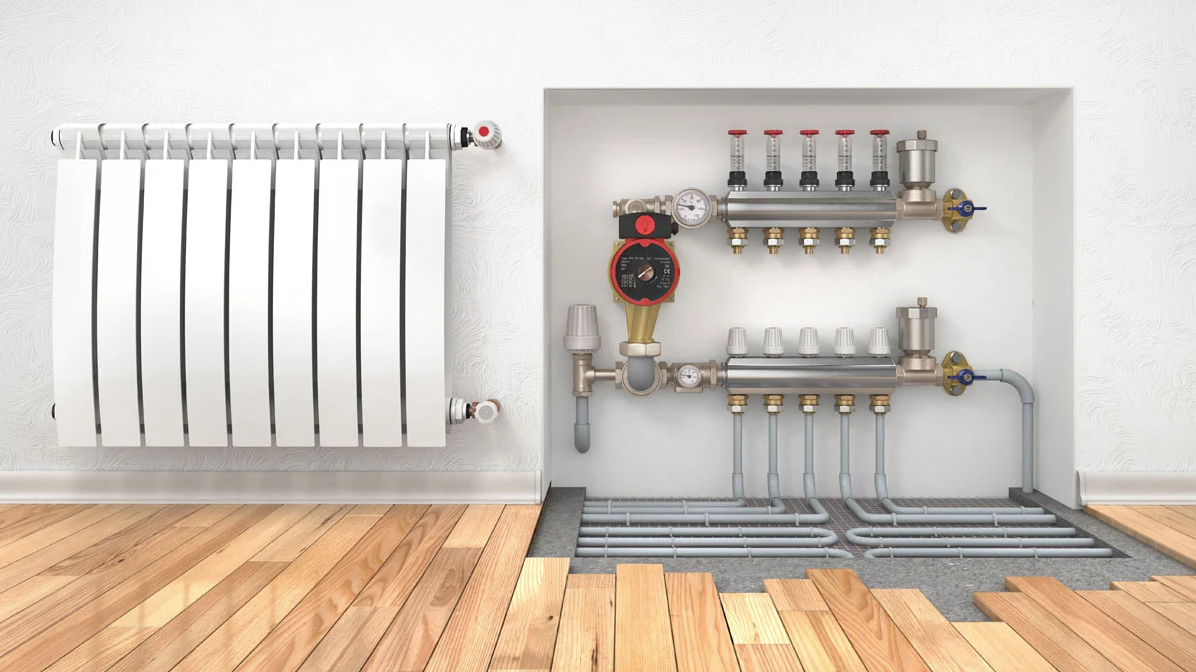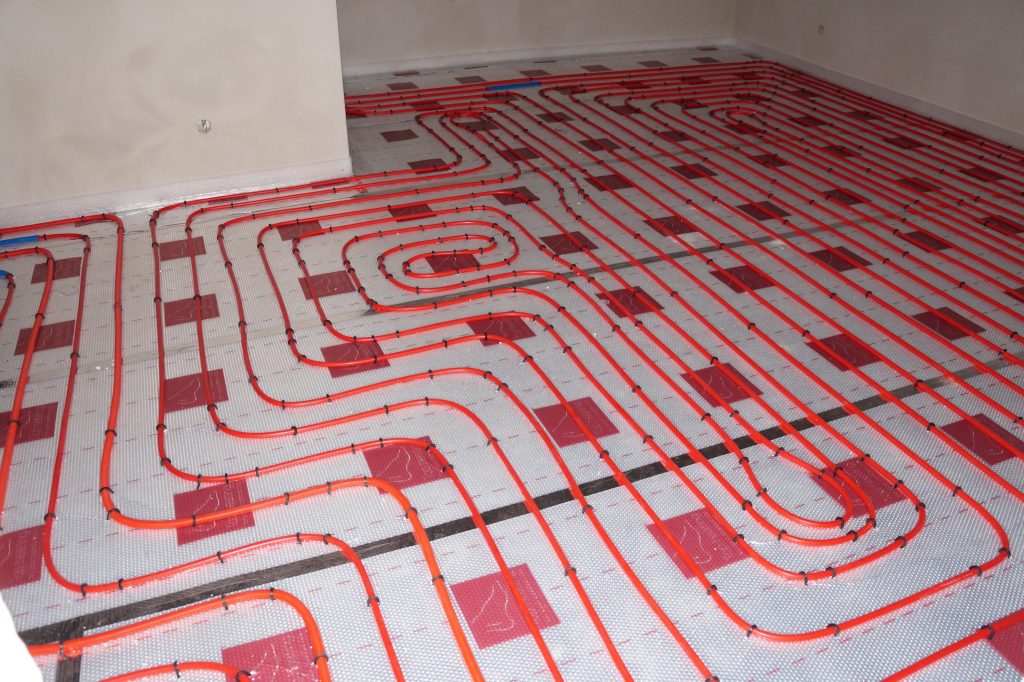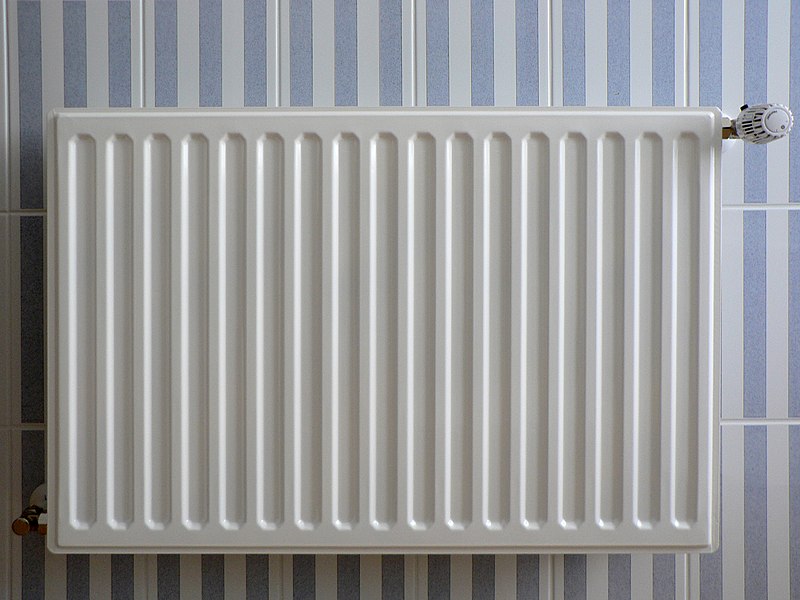Underfloor Heating vs Radiators
Heating systems have been an integral part of most people’s lives, particularly those living in areas with harsh winters. These systems ensure you and your family stay warm and comfortable even if the outside temperatures drop to sub-zero degrees.
If you are someone who has recently moved to such areas and looking to buy a heating system, you must know that there are a variety of heating systems. Furnaces, heat pumps, boilers, radiators, etc., are classic examples. It is critical that you pick the right system that is not only efficient but also cost-effective.
Now, two really popular heating systems available today are underfloor heating systems and radiators. Both have their positives and negatives, making the decision to choose one very challenging.
And that’s where this post can help as we bring you the top differences of underfloor heating vs radiators so that you can make an informed buying decision.
Read also – The Definitive Guide To Space Planning In Interior Design
What is Underfloor Heating?
Underfloor heating (UFH system) is a type of central heating system equipped with an array of heat tubes embedded in the floor.
The basic principle of this heating system revolves around the transfer of heat through conduction, convection, and radiation.
Image Credit: wikipedia.org
There are two types of underfloor heating systems:
1. Hydronic system
This system uses a mix of fluids, mostly water, along with certain antifreeze elements, such as propylene glycol, that act as a heat transfer agent.
The hydronic system makes use of a boiler, where the fluid is heated and distributed evenly across the room through the underfloor piping. The boilers, in turn, are powered by fuel sources such as electricity, wood, or biofuels.
2. Electric system
Electric underfloor heating systems use electricity as the primary source of heating. Instead of pipes, these systems employ flexible cables and meshes for transferring heat to the floors and walls.
Electric systems have fewer components compared to hydronic systems. The consumption charges for an electric heating system are calculated by the amount of watt power produced by the heating element.
Read also – Guide To Use Line in Interior Design
Benefits and Adverse Effects of Underfloor Heating
Now that you know what underfloor heating is, let us look into its pros and cons.
Pros of Underfloor Heating System
1. Low maintenance cost
The materials and fluids used in an underfloor heating system are quite sturdy and tough, eliminating the need to perform repeated maintenance activities. In fact, many underfloor heating systems come with a guarantee of at least 25 years with minimal maintenance.
2. Energy efficient
Most underfloor heating systems have been built keeping energy savings in mind. They are considered extremely efficient in performance and energy consumption compared to radiators. (We will discuss this later.)
Underfloor heaters are also capable of retaining heat for a longer period, even after the supply is cut off. This brings down heating bills considerably.
3. Low running costs
Though underfloor heating systems generally have low running costs, hydronic systems, in particular, are extremely cost-effective. With the primary source of heat being hot water, there is no need to spend hundreds of dollars on gas and fuel.
4. Improved comfort
As these systems use effective heat conduction principles, that too straight from the ground, they distribute the heat around the room evenly. This ensures that you feel the warmth at every corner of your house.
5. Environment-friendly
Unlike air conditioners, emitting harmful CFC gases into the environment, underfloor heating systems involve no such process. This makes them a great choice for all environment-conscious people.
6. Doesn’t occupy space
As underfloor heating systems are installed below the floor, there is no need to worry about making additional space in your home.
Read also – Traditional Architecture vs Modern Architecture
Cons of Underfloor Heating System
1. Installation cost
Even though the running and maintenance costs are low in underfloor heating systems, the same cannot be said about the installation costs.
Due to the advanced technologies involved and the need to install the system below your floor, homeowners need to spend considerable money on these.
Also, underfloor heating systems cannot be installed by everyone as it requires special expertise and skills, shooting the costs even higher. You will also need the help of a plumber to install the system.
2. Installation time
If you are looking for instant heating solutions, an underfloor heating system is not your best choice.
The entire installation process involves multiple complex steps, such as removing the floor tiles, doing pipework, installing the system, and relaying the floor tiles, all of which take considerable time.
Some systems might even require screeding and curing, adding to the installation time.
3. Increase in floor height
This is expected because you are installing something below your floor. After installing the underfloor heating system, expect a considerable reduction in the distance between your floor and ceiling. This can be particularly disadvantageous for those living in houses with low ceilings.
Read also – Floor Plan Symbols and Abbreviations
What are Radiators?
Compared to underfloor heating systems, radiators are more common and have been used for many years. Radiators are basically heat exchangers that transfer heat continuously from one medium to another through the process of convection.
A radiator typically consists of a boiler (source of heat) and a set of pipes for the water to flow. Water from the boiler gets heated up and flows around the pipes, where it is converted into steam. This is then used for heating the surrounding space.
If you have seen a radiator before, you might have noticed that it is made up of heavy metals like cast iron. This is because iron is a very good conductor of heat and also results in a reduced surface area, making it a great choice for heating the air around.
Read also – 10 Best Smart Technologies for Interior Design
Image Credit: wikipedia.org
Benefits and Adverse Effects of Radiators for Internal Heating
With that basic introduction about radiators, let us now look at their positives and negatives to decide whether a radiator system is the right choice for you.
Pros of Radiators
1. Efficiency
For a conventional form of heating system, radiators are quite efficient.
The efficiency of a radiator can be measured by the decrease in the tangible costs associated with it. However, when it comes to conventional radiators vs electric ones, the electric ones always triumph in the efficiency sector.
2. Faster heating
Radiators heat the room much faster than other heating systems, including underfloor heating systems. They provide instant warmth as soon as you switch on the system. Since the convection process takes place at a faster rate, the time taken by a radiator to heat a room is also quicker.
3. Zoned heating
Most radiators come with built-in thermostats that enable you to control the heating levels and room temperature in different parts of your house. In other words, you can create multiple heating zones within the same house based on the level of warmth required in different cold spots.
This also ensures that you utilize the heating properly without wasting energy on unused spaces.
4. Enhanced aesthetics
While underfloor heating systems are not visible to the eyes, radiators come in various designs that can add to the aesthetics of your house.
Radiators are available in every size and shape, such as horizontal, vertical, sleek, etc., all of which can effectively blend in with your interiors.
You can also try a traditional German radiator for an antique look as part of your interior design.
5. Smartphone-controlled
With rapid developments in technology, most traditional radiators have become ‘smart’ and can be controlled via smartphone apps. All you need is Wi-Fi connectivity in your house to control the heating levels with a few taps.
Read also – 19 Floor Plan Mistakes To Avoid
Cons of Radiators
1. Radiators cause draughts
There are chances that you might feel cold on your feet even with the radiator switched on. This is because of a simple thermodynamic principle: colder air moves down while hotter air flows up.
As the warm air rises to the ceiling and gradually cools down, it tends to settle on the floor beneath. This is the reason why you may feel draughts or cold air during winter with all doors shut, and the radiator switched on.
2. Disruption in the room layout
Radiators are mostly wall-mounted, impacting design freedom. This requires that no furniture be placed against that wall space. Installing under the window is also not a great choice as it doesn’t offer efficient heat output.
Placing it under the window means your heat source coincides with the heat vent, which impacts the radiator’s efficiency.
3. Leakage problems
Most homes use a wet radiator with water flowing in and out of the system. This poses a major threat to the building in the form of water leaks at any random spot. Leakage from radiators is difficult to clean and will result in a messy floor.
4. High maintenance costs
Unlike underfloor heating systems, radiators demand regular maintenance by a professional. The tubes and vanes should be removed and cleaned at regular intervals for better output. This adds to the maintenance costs.
5. Safety issues
Due to the working nature of this system, radiators pose a safety threat to your property. Several accidents have occurred due to radiator malfunctioning.
Read also – How To Design A Home?
Factors to Consider While Choosing a Home Heating Solution
Now that you have a fair idea about underfloor heating vs radiators, including their positives and negatives, it is time to select one for your premises.
To help you with the choice, we have come up with a list of factors to consider before picking one:
1. Climate
The first thing you must look for in a home heating solution is its purpose. Countries like the UK, USA, France, etc., are known for their extreme and prolonged winters.
If you live in such places, you must select a heating system with low maintenance and operating costs.
2. Space
If you have a lot of space in your home and do not mind having an additional component installed on the wall, you can go with radiators.
On the other hand, if space is a constraint or you do not want your heating system to occupy a portion of your living space, embrace underfloor heating systems.
3. Availability of service centers and technicians
This is a given. You do not want to buy a heating system that does not have service centers or skilled technicians in your area to repair it. There are still countries and areas where underfloor heating systems are unheard of.
It doesn’t make sense to install underfloor heating systems in such areas as you do not want to be stranded for days waiting for a technician to arrive.
4. Cost
When we talk about cost, you must consider purchasing, installation, maintenance, and repair costs. Find out how much both types of heating systems cost in your area. Pick one that is not necessarily cheaper but offers the best value for the money spent.
5. Construction status of your house
As we have pointed out earlier, underfloor heating systems involve removing the floor tiles and relaying them. If your house is still in construction and the tiling hasn’t been done yet, you can always go ahead with underfloor heating systems.
It will reduce your installation time and installation costs considerably. However, if your house has been constructed and it is difficult to remove and relay the floor tiles, you must adopt radiators as your heating solution.
Read also – Wool Duvet vs Down Comforter
Tips for Choosing the Best Heating Solution for Your Home
We understand that purchasing and installing a home heating solution can be a major investment in your lives.
A wrong choice can create a dent in your savings and also in your emotional balance. To avoid this, here are 3 handy tips that can further help you choose the right heating solution –
1. Gather more knowledge about heating systems
This is true for any device, more so for a heating system, because it will play a key role in your home during winter.
Find out everything about heating systems, including their working principle, energy efficiency factors, different brands in the market, how they differ, and so on, before narrowing down on one.
2. Collect feedback
There is nothing better than asking your friends, families, and neighbors about the heating systems they use at home.
Look to those who have been using it for quite some time, as they will be able to highlight the challenges that come after prolonged usage of the system.
3. Talk to HVAC experts
If you have easy access to Heating, Ventilation, and Air Conditioning experts, ask them about the best heating systems in your area.
Not only will they be able to guide you to the right solution, but they might also give some handy tips to maintain the system to improve its longevity.
Conclusion
Even though heating devices have been in use for several centuries, there have been significant developments in this technology. New heating systems like underfloor heating systems, smart radiators, ductless heaters, etc., have made people’s lives much better without compromising on heating efficiency.
With this guide, we are sure you will be able to select the best heating solution for your home.











